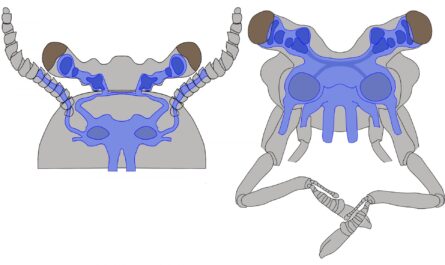A study conducted by researchers at the University of Cincinnati College of Medicine has identified a new molecule that could play a role in treating asthma. The research, led by Satish Madala, Ph.D., focused on asthma as a disease model to understand the mechanisms behind airway constriction, a common symptom of asthma.
Dr. Madala, who himself suffered from childhood asthma, was motivated by personal experience to delve into this area of research. He wondered why he would experience asthma attacks when exposed to diesel exhaust, while his friends remained unaffected. This led him to question the functioning of his own lungs and eventually pursue a career in studying asthma.
Asthma is a chronic airway inflammatory disease that affects millions of people worldwide. The study conducted by Dr. Madala and his team sought to investigate the molecular processes that occur in smooth muscle cells present in the airways, blood vessels, and other organs. These smooth muscle cells are responsible for airway constriction.
The study found significantly increased levels of a specific molecule in the smooth muscle cells of allergic asthma animal models. It was also discovered that common asthma-associated cytokines directly triggered the increase in human and animal airway smooth muscle cells. This provided valuable insights into the mechanisms behind airway narrowing.
Importantly, the researchers found that blocking this molecule through genetic manipulation in animals resulted in a significant reduction in airway narrowing, without impacting other key features of asthma such as inflammation and mucus production. This suggests that targeting this molecule could be a promising approach for treating airway obstruction without affecting other aspects of the disease.
Dr. Madala explains that this discovery identifies a distinct pathway that contributes to airway hyper-responsiveness, independently of the classic inflammatory processes associated with asthma. However, further research is needed to understand how this molecule functions in increasing calcium levels in smooth muscle cells and causing them to contract more aggressively.
If this interaction or process can be interrupted, it may be possible to reduce the severity of airway constriction in asthma patients. Manipulating and mitigating this molecule could lead to significant improvements in asthma treatments. However, more research is needed to fully understand its potential.
The findings of this study have implications beyond asthma, as smooth muscle cells are present in various tube structures in the body. Understanding the molecular mechanisms behind airway constriction could provide insights into the treatment of other conditions involving smooth muscle cells.
In conclusion, this study has identified a new molecule that plays a role in asthma and airway constriction. Targeting this molecule could offer a novel approach to treating airway obstruction in asthma patients. While there is still much research to be done, this discovery brings hope for improved asthma treatments in the future.



